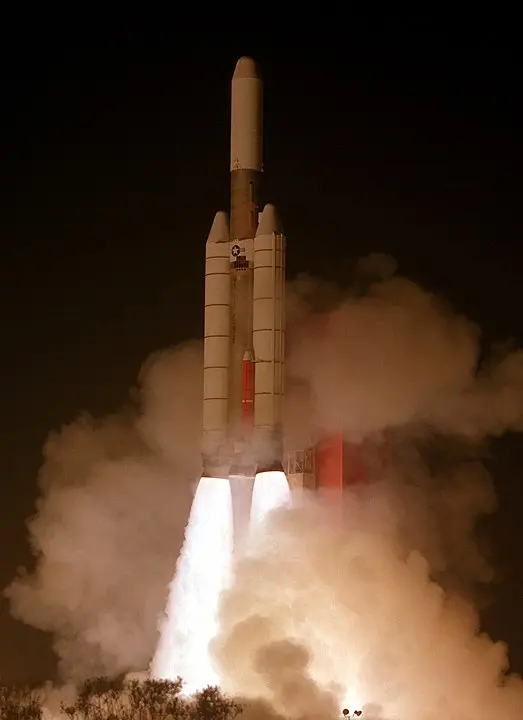KH-9 18 (Hexagon 18) & P-801 7
Launch Success
Liftoff Time (GMT)
18:45:00
Monday June 20, 1983
Mission Details
KH-9 18 (Hexagon 18)
The KH-9, also known as Hexagon or "Big Bird," was a large reconnaissance satellite designed to replace the earlier KH-4B Corona satellites. Unlike its predecessors, it utilized a new maneuverable bus called SCS (Satellite Control Section) and featured four return capsules for extended operational lifespan. Manufactured by McDonnell Douglas, the Mk.8 return capsules facilitated mid-air recovery of film capsules, similar to Corona satellites. The camera system, built by Perkin-Elmer, comprised two panoramic cameras for area surveillance, capturing images at altitudes ranging from 90 to 200 miles. These cameras utilized an f/3.0 folded Wright Camera optical layout with a 1.5 m focal length and achieved ground resolutions better than 0.61 m, scanning areas up to 120° wide.
Low Earth Orbit
1 Payload
13,300 kilograms
P-801 7
The P-801 (or Program 801) satellites were a special series among the so called "Subsatellite Ferrets", low orbit ELINT/SIGINT satellites to pinpoint and characterize different Radar emitters in the Soviet Union and Warsaw pact states. Before their program name was known, they are referred to as "Subsatellite Ferret C" (SSF-C).
Rocket


Agency
Martin MariettaRocket
Height: 50m
Payload to Orbit
LEO: 14,515 kg
GTO: 5,000 kg
Liftoff Thrust
11,279 Kilonewtons
Fairing
Diameter: 3.05m
Stages
3
Strap-ons
2
Launch Site
Stats
Titan III
134th
Mission
2nd
Mission of 1983
1983
61st
Orbital launch attempt